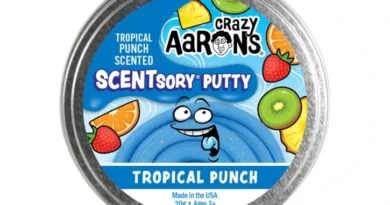How Defective Tools Hurt Construction Workers
Construction is a dangerous profession. Heavy machinery, working from heights, hazardous materials, and dangerous tools are just some of the factors that contribute to the high number of workplace injuries in the construction industry. Despite improving hazard management technologies, OSHA 10 online training, and vigilant equipment checks, no business can ever be fully prepared for the potential risks posed by defective tools on the job.
Workers’ Compensation or Product Liability Lawsuit
Aside from independent contractors, construction workers are typically covered by workers’ compensation in the event of an accident. Workers’ compensation is an insurance system that most employers are required to carry. It protects employees by providing coverage for medical costs as well as paying for lost wages. At the same time, workers’ comp protects employers from injury-related lawsuits. 
While construction workers should file a claim for workers’ compensation in the event that they get injured by a defective tool, they should also consider filing a lawsuit against the tool manufacturer. That way, they can get the maximum compensation available to them.
Construction workers have enough dangers to worry about on the job without having to also be concerned that their tools are going to turn against them. Also, it is wise for them to carry Contractor Insurance, to insure their work exposure while doing the job.
Types of Product Defects
When it comes to product defects that lead to liability claims, there are three main types of problems which are:
- Design defects
- Manufacturing defects
- Marketing defects
Design Defects
Design defects are the first defect that can come up in the creation of a product. The problem with a design defect is a problem at the core of the product. Something in the design makes the product dangerous. Not all hazardous products, however, are defective. A chainsaw is dangerous, but it needs to be in order to do the job it was designed to do.
An example of a design defect would be a fidget spinner with razor blades on the ends. Even if it is constructed perfectly, it is going to be unnecessarily unsafe. This is especially true if it’s being marketed as a children’s toy.
Unless it is a new tool on the market, most of the time a tool is not going to have a design defect. Unless someone is trying to reinvent the hammer in some way, any problem with this tool is not going to be design based. However, if someone were to create a new design for a power saw that didn’t have any protective guards, this could easily be considered a design defect.
Manufacturing Defects
Most tool defects fall under this category. A manufacturing defect occurs when a product is properly designed, but due to sloppiness in the manufacturing process, the product becomes defective.
Sometimes, manufacturing defects are purely due to accidents, like a problem with some of the equipment used to produce the product. Malfunctioning equipment can lead to a manufacturing defect if it is not discovered before affected products have already reached the market.
In other cases, a manufacturing defect is caused by a manufacturer or employee deliberately trying to cut corners. A manufacturer may find a cheaper deal on a material than the one the product calls for and decide to pocket the savings. They may believe that it will make no difference to the product, in the end, only to discover that the replacement material was inferior and led to serious hazards.
Whatever the reason for the manufacturing defect, the point is that a dangerous product has hit the market. The best way for a manufacturer to protect themselves from getting in a situation where they face a product liability lawsuit is to strenuously test the products they produce.
Depending on the rate of production, a quality control test should be carried out at periodic intervals to ensure safety. Often it is not the product as a whole that is being manufactured poorly, but a specific batch. With regular testing, a manufacturer will know which articles to pull.
Marketing Defects
Like with design defects, marketing defects are rarely the problem when it comes to defective tools. Marketing defects occur when there are dangers in a product that don’t come with clear warnings. While most people can see the dangers that tools present, others still claim that a hammer should have a warning saying, “Danger: don’t hit yourself or others in the head. May cause brain damage or death.”
An excessive warning label like that may seem ridiculous to most of us, but there are still some people who would try to bring a lawsuit against a company for a case like this. In this particular instance, most judges would throw the case out because the dangers of hitting people in the head with hammers are quite obvious. However, when it comes to tools, especially power tools, most companies would rather be safe than sorry.
Because of laws concerning marketing defects, you will see excessive warning labels slapped all over many tools and might even find a warning label on a hammer.
Contact a Lawyer
If you were injured by a defective tool, contact a product liability lawyer to set up a free consultation and discuss the legal options available to you.








This is scary but true, there can be defects and construction workers can get hurt by tools. I would hope this doesn’t happen that often though.
I can see where that could be a serious problem. My guy owns a small painting and construction company so I totally get it.